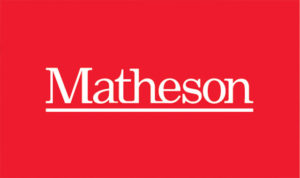Sustainability in Building, a shift in focus

The introduction of Near Zero Energy Buildings in Ireland will necessitate a shift in focus from Irish construction. Kimberley Masuda, Partner at Matheson, discusses how these new regulations and other environmental, social and governance initiatives such as green loans will affect the Irish building landscape.
Sustainable building in Ireland is not new. Along with the voluntary rating systems Building Research Environment Environmental Assessment Method (BREEAM) and the U.S. Building Council’s Leadership in Energy and Environmental Design (LEED), the government has been increasing the minimum standards for energy efficiency in building leading to the introduction of Near Zero Energy Buildings in Ireland in 2019.
Near zero energy buildings guidelines are set out in the European Union (Energy Performance of Buildings) Regulations 2019 (S.I. No. 538 of 2017 and S.I. No. 183 of 2019) which are transposed from the Directive 2010/31/EU of the European Parliament and of the Council on the energy performance of buildings (recast), as amended by Directive (EU) 2018/844 of the European Parliament and of the Council of 30 May 2018. The main difference between the voluntary certification and the energy efficiency requirements in the Building Regulations is the breath of the factors which are considered in the rating systems such as BREEAM and LEED. These rating systems focus on the entire environmental impact of building from construction stage through occupancy and eventual demolition.
However, both the Building Regulations and, at least initially, the rating systems only applied at the point that construction was completed. The recent trend is now for the assessment of the buildings actual on-going performance to determine if the building is successfully performing within the designed parameters. BREEAM, for example, has developed the BREEAM In-Use scheme to monitor and assess on-going environmental performance.
There can be other ‘economic’ benefits to on-boarding more recent rating systems to construction and to a building life-cycle, for example, ‘green loans’ for buildings are now available where the interest rates on debt associated with the building decrease where the building is verified to be performing at the stated levels. It is clear then, that there is support for environmental, social and governance (ESG) factors both in the context of regulatory facilitation and financial banking.
More recent rating systems are now looking, not only on the physical environmental impact of buildings, but also the effect that buildings have on the well-being of the people to live and work in and around them. For example, GRESB (the Global Real Estate Sustainability Benchmark) is an investor driven system to measure the ESG performance of buildings throughout the term of the investment and is increasingly a requirement of BTR – PRS development investors in this jurisdiction. WELL Certification is another rating system which focuses entirely on the impact buildings have on human health and wellness. These investor requirements are also being reflected in the construction documentation to ensure the buildings are delivered to these standards.
For more information or assistance in incorporating these requirements into construction documentation, please contact:
Rhona Henry
Partner and Head of the Construction and Engineering Group
E: rhona.henry@matheson.com
D: +353 1 232 2110
Kimberley Masuda
Partner
E: Kimberley.masuda@matheson.com
D: +353 1 232 2798






